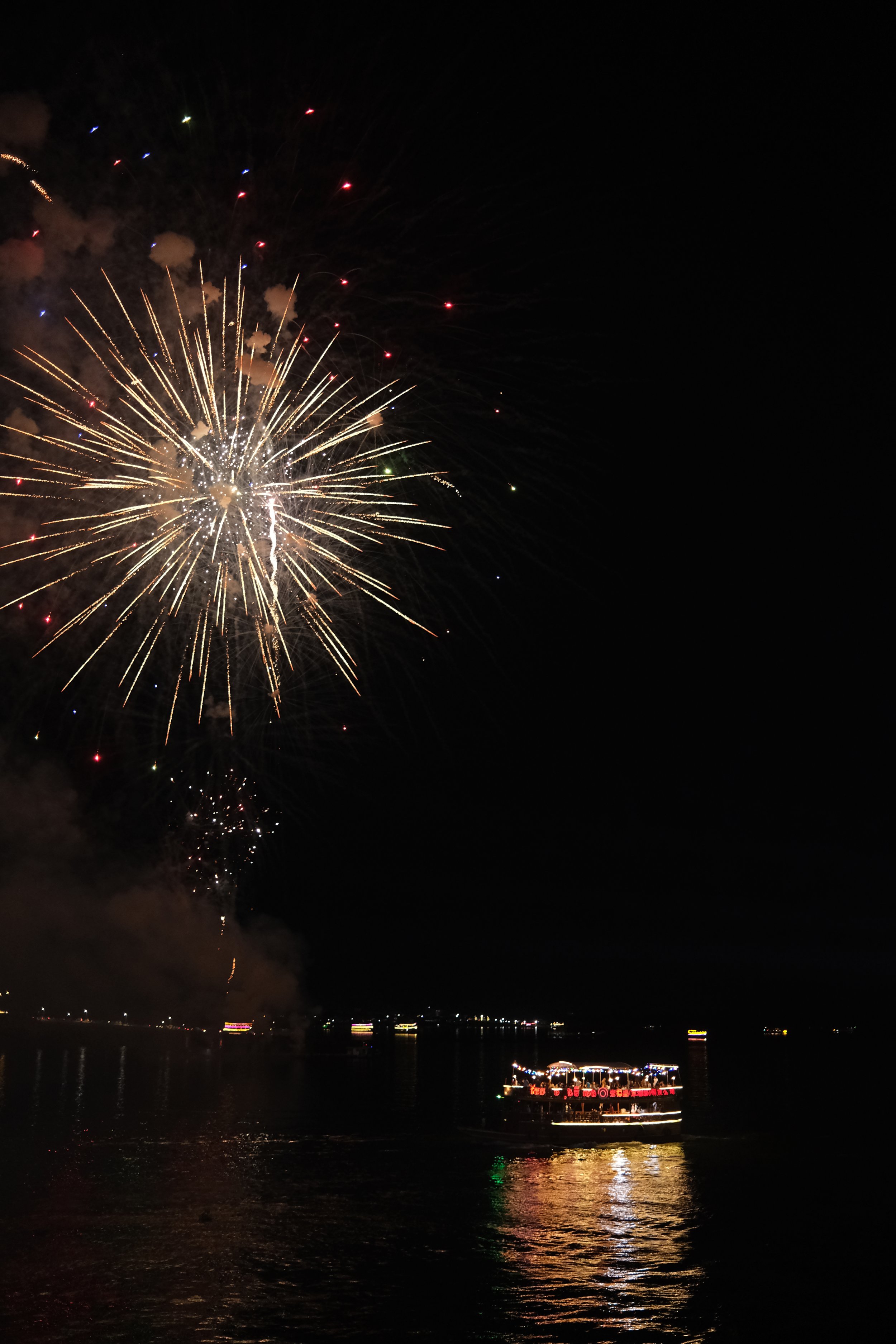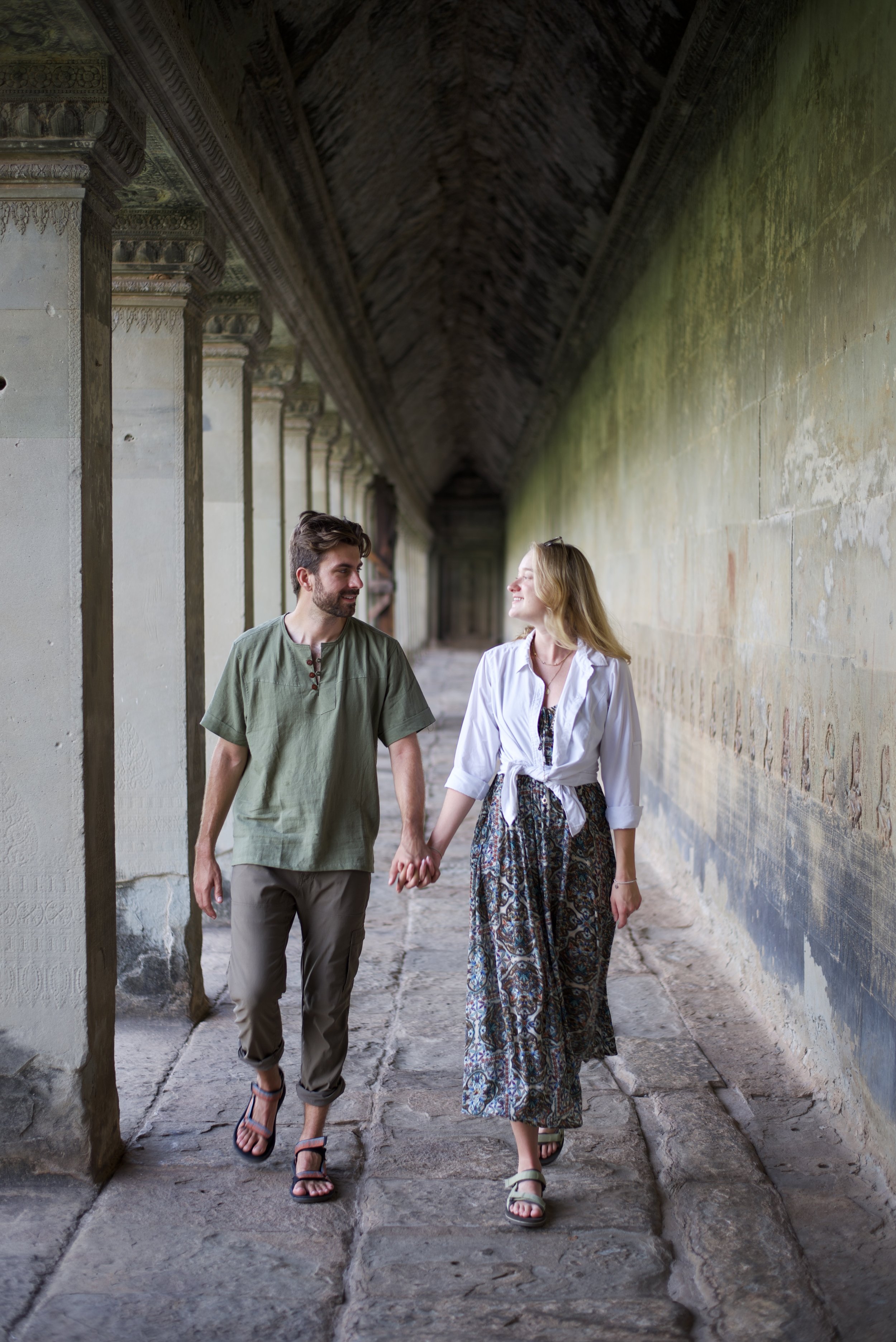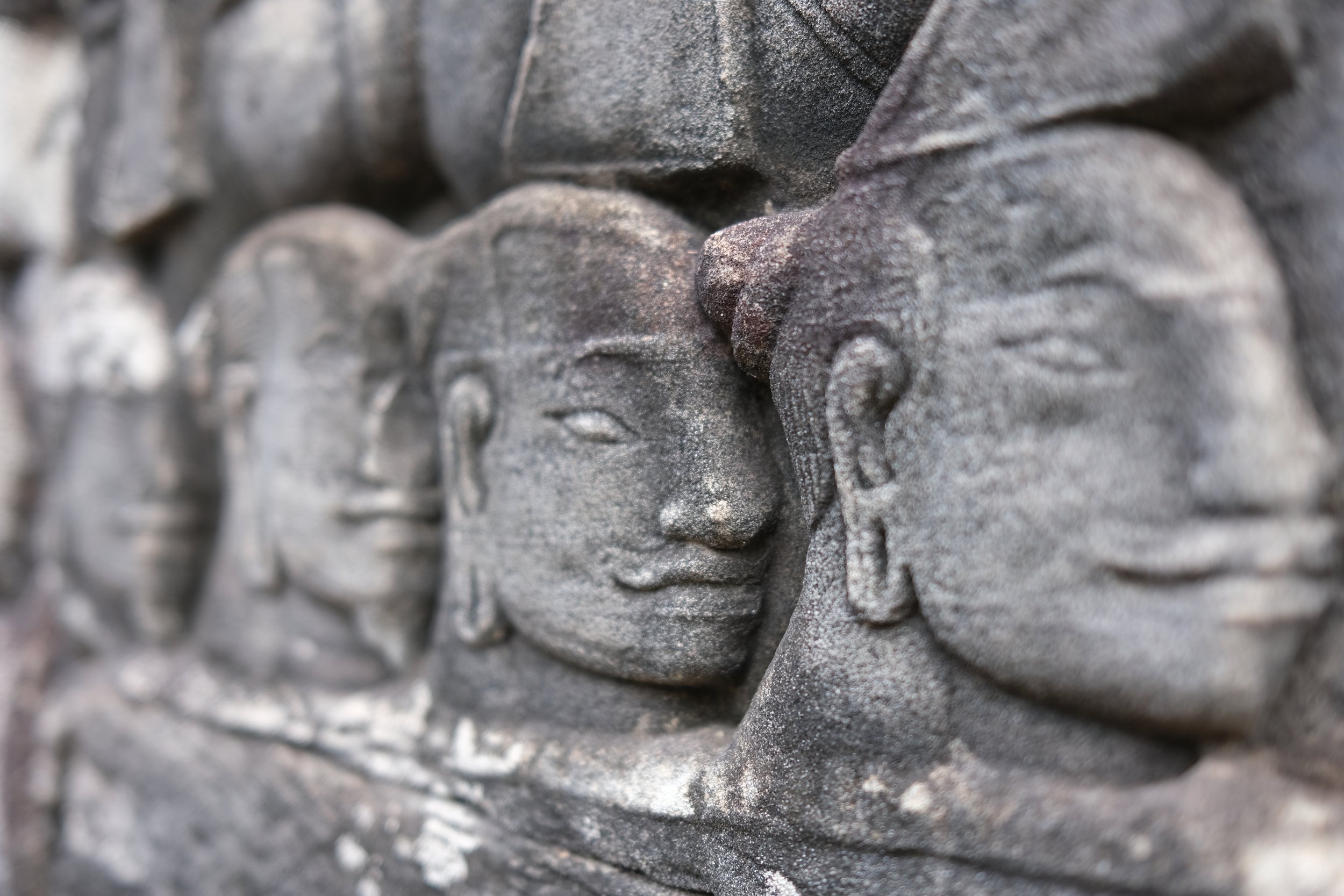Trip Report - Cambodia
Our Trip & Itinerary
We spent about a week in Cambodia. We thought this would be plenty of time, based on Jackson’s assessment of his last visit, but we loved it so much that we could have tacked on another few weeks! We ended up hitting the major tourist destinations, but unfortunately not having enough time to get into more of the less frequented areas. We arrived in Phnom Penh from Vietnam by way of a very long and strenuous bus journey and spent a little over two days exploring the city before catching an overnight bus up to Siem Reap. We dedicated more time (about three days) to Siem Reap, as we knew we had the massive Angkor temple complex to discover. With this timing we were able to see the key temples on the site, but left behind hundreds of smaller, less visited ones. During our time in Cambodia and looking back now, we felt an overwhelming sense of gratitude for the people, the rare beauty we were lucky enough to experience, and the history we took with us. Learning about the Cambodian past that was heavy with the terrors of genocide not long ago, we were reminded how important it is to appreciate and protect our freedoms, and that resilience does not come easily.
Phnom Penh
To get us to Cambodia from our brief first stop over in Vietnam (more on that full trip soon), we decided to take Virak Buntham’s express coaster service at a cost of $30 per person. While traveling by road is the cheapest and most common way to get from Vietnam to Cambodia, it doesn’t come without its challenges including traffic, delays at the border, and unpredictable weather. What was supposed to be a six hour journey for us quickly unraveled into a much delayed, eight-hour bus ride, meaning we arrived in Phnom Penh late in the evening. Despite the rough journey, our night quickly improved upon arrival, as we were staying at the terrific Baitong Hotel & Resort. While we stood there, bleary-eyed and sweaty, the friendly staff whisked our bags away to our room while we checked-in. With it already being so late, we opted for a moment to relax and get to bed quickly, preparing for an expectedly very emotional following day.
Phnom Penh is full of life now – cafes serve local and international goodies, people crowd the streets, and the sound of motorbikes fills the air… It wasn’t always like this. In the late 1970’s, the genocidal Khmer Rouge regime led by Pol Pot emptied out Phnom Penh and Cambodia’s other large cities, relocating its residents to farming communes, in an attempt to emulate China’s “Great Leap Forward.” Alongside the upheaval of all these lives, city folk were frequently tricked into schemes that would later lead to their family’s death and their own. We spent our first day in Phnom Penh learning about the horrific tragedy of the Khmer Rouge genocide at the Tuol Sleng Genocide Museum and the Choeung Ek Genocide Center, also brutally known as “The Killing Fields.” These two museums do a terrific job of helping visitors understand the absolute horrors of the Khmer Rouge regime. Tuol Sleng was a prison and torture facility during the regime known as “the place where people enter and never leave.” Of the more than 20,000 people who spent time in Tuol Sleng, only twelve individuals survived: seven adults and five children. If you’re fortunate enough to visit when some of the survivors are at the museum, take a moment to learn more about the terrors they witnessed and hear how they survived. While Tuol Sleng is in the center of modern Phnom Penh, Choeung Ek is a few kilometers outside, but can be reached in about 20 minutes via tuk tuk or remorque and is another essential piece to understanding the shockingly recent Cambodian genocide. Unlike Tuol Sleng, there are no survivors to talk to here. Over three years, at least 17,000 people were killed here including women, children, and even newborn babies. An audio guide tour leads you around the grounds, highlighting key sites of countless mass graves that are still surfacing clothing and bones to this day, as well as the striking stupa that houses the skulls of 5,000 victims. Please be aware that what the audio guide discusses at both museums can be quite graphic and we urge parents with children to offer guidance and support when visiting. While both museums are absolutely worth a visit, we recommend splitting them up over separate days if you have enough time, as they’re both very heavy and seeing them in quick succession can easily emotionally drain you.
In between our stops at the Tuol Sleng and Choeung Ek genocide museums we found we should try to stomach some food and visited Malis Norodom. Jackson had visited this restaurant on his last trip to Cambodia in 2018 and has been raving about it ever since. It was just as terrific as he had remembered: the dining experience was very traditional and sophisticated. No worries – no need to dress up here! We rocked up in our shorts and t-shirts, drenched in sweat and were served with the utmost respect. We shared a Vegetable Amok and Morning Glory, while Jackson had the Saraman Beef and I ate the delicious roasted eggplant. Even though this restaurant is one of the more high-end establishments in Phnom Penh and fairly expensive locally, our entire lunch only cost us $44 for four massive dishes! This is definitely a sharing restaurant (we figured this out the hard way), so order 2-3 dishes to share!
Our final day in Phnom Penh happened to fall on King Sihamoni’s birthday, giving the city an air of excitement and a buzz on the streets. We started our day with a trip to Enso Cafe for a terrific brunch with some fellow world-traveling friends from Europe. Let me tell you, it’s so nice to see a familiar face when you’ve been on the move for so long – home can really start to feel a million miles away! Enso Cafe has a great variety of breakfast and brunch options with both tasty traditional Cambodian dishes and nostalgic western options on the menu. After brunch we all made the hot, humid trek up to Wat Phnom, a buddhist temple sitting atop an artificial hill from 1372. While the temple with its beautiful stupas and pagodas are a Phnom Penh landmark, the temperatures outside now felt rather hellish, making the journey to the top rather miserable. You’ll find that the sticky humidity paired with the sweltering temperatures are quick to drain your energy, so breaks in cool air are absolutely essential to successfully (and safely) exploring outdoors. Needing one of these breaks, we went to La Croisette for some gelato and their sweet, sweet air conditioning. Expecting small ice cream scoops, similar to those served at most western gelato spots, we were pleasantly surprised when our cups overflowed with colossal scoops. Fueled by sugary goodness, we did what any good adventurer with endless sights to see would do…Nope, you guessed wrong. We said to hell with it and went to the pool instead! In our 6 months of traveling, we’ve learned that it’s okay to take it easy sometimes! There’s no sense in feeling guilty over the things you didn’t see when you’re taking care of yourself.
Once we were showered that evening, we felt ready for another segment of exploring in the slightly more refreshing temperature of the night (although the difference was marginal). We walked down the riverbank from our hostel to the Royal Palace Park and scoped out a place to watch the fireworks for the King’s birthday. Our walk led us through crowds of excited Cambodians – some selling street food off of tablecloths, others squeezing onto the sidewalk to enjoy a meal with their families. The streets were dotted with hundreds of sāmaṇera, novice male Buddhist monks, who relished the chance at having a bit of fun with their friends and family outside the order. We secured a spot above the Mekong and much to our surprise, we ended up right in front of the firework display! The extravaganza was a loaded, loud, and lavish 15-minute show, causing us to ‘ooo’ and ‘ahh’ while the bustle continued on the street behind us. Once the display was finished, we made our way through the crowds to Masala Dosa Street Kitchen, a terrific Indian restaurant just a couple blocks from the Royal Palace of Cambodia. Do not – I repeat – do NOT miss the cheesy garlic naan! It’s the best one I’ve had by far! Loaded with carbs and spices, we said farewell to our friends and hopped on a remorque to E-Booking Express where we would board our overnight bus to Siem Reap!
Siem Reap
While it’s possible to fly from Phnom Penh to Siem Reap, the convenience of the buses and their ability to accommodate our large luggage, made it the more appealing option for us. Several of these buses run each night through different companies, meaning tickets come at a variety of price points and with numerous different seating or bed options. We shared one berth with a double bed and even though it wasn’t quite long enough for our two 6 feet+ bodies, we were able to sleep about 4 hours each, much more than we were expecting!
We arrived in Siem Reap around 5:45 to a soft sunrise that was just breaking through the clouds over the dense jungle of inner Cambodia. Upon arrival we were ushered to our hotel by one of the company’s local drivers, then promptly went out in search of a strong cup of coffee to wake us up a full day of exploring Angkor Wat ahead. To satisfy our breakfast needs we stopped by one of Cambodia’s most popular coffee chains, Brown Coffee. Their main location in Siem Reap is just along the Siem Reap River, with huge glass windows overlooking the small waterfront and jungle vines growing along the building. They serve terrific traditional Cambodian and Vietnamese coffees, with tasty house-made pastries as a treat for any time of day. We each had an iced condensed milk coffee, these have become a favorite for us in South East Asia, and immediately felt the caffeine take hold. Jittery and ready to conquer the day, we met Oun, our tour guide for the day. We had heard about him from our friends in Phnom Penh and connected with him through withlocals.com to show us around the Angkor temple complex. He explained our route for the day and took us to meet our remorque driver for the day, Sok Thom.
The Angkor temple complex is the main reason that most tourists come to Cambodia, and it’s easy to see why. With Jackson’s previous experience and my research, I thought I was prepared for the size of the complex, but the vastness of the site absolutely blew me away. Spanning over 400 square kilometers, the complex is home to over 1,000 buildings and temples that range anywhere from non-descript piles of rock and brick to the sturdy halls of Angkor Wat. The structures all have their own unique history and were constructed over different periods of time, so they all differ in design. Most of the buildings were built by the Khmer Kings and Queens as temples to their loved ones or favored gods. Beyond religion, some of the structures in the Angkor complex had dual purposes, such as Ta Prohm, which was also a center for medical learning.
While we could detail each temple we visited during our quick stay, we can only recommend seeing them for yourself to fully experience their magic. Despite their age, the walls house elaborate etchings that portray tales, Buddhist teachings, and the grandeur that once was the life of Cambodian Royalty. The temples impressively climb towards the sky, each level stacked on top of the other with great skill and precision. Wandering the halls, you’ll feel a hint of the times that once were, feel the history that is housed in the sandstone, laterite, and brick that formed the temples as long as twelve centuries ago. We visited the complex at different times of day: sunrise, midday, and sunset. Each time, the temples were different. Much like our visit to Uluru, the light, air, and crowds led to a different experience each time. The morning was busiest at the front of Angkor Wat, as this is the only temple open for sunrise and the crowds gather to see the temple’s reflection in the lake. We set off towards the building once the sun was fully risen and discovered the much more tranquil scene on the East side. Once we passed the entrance, we were left with just the sound of the swallows, crickets, and the breeze in the trees. The light turned hazy and pale yellow, illuminating the jungle and Wat lotus towers. Midday comes with a suffocating heat, but means the temples become quieter. We spent our time hopping from temple to temple, often finding ourselves alone. It was surreal to wander structures like Preah Khan, that are inches from being reclaimed by the jungle vines and are not as well-maintained as its counterparts. The temple’s collapsed wings add charm and if you’re lucky, locals might even show you hidden places of worship among the rubble. For sunset, we hiked up to Phnom Bakheng, the only temple open at this time. While the crowds also gather here each evening, we were lucky enough to witness a very special event. Just as the sky turned tangerine, a group of about 30 Buddhist monks and nuns joined us, ranging in age from as young as twelve to as old as seventy or eighty. At first they spent their time simply looking over the temples in the distance, with their stupas poking out from the thicket of the jungle. Once people began to leave the peak, they gathered in front of the central sanctuary and erupted into a mesmerizing chant. Their voices stopped us remaining tourists in our tracks and we listened in awe as their voices carried into the sunset.
With so much to see, we opted for the three-day entry pass which cost us $62 each – quite pricey by Southeast Asian standards! They also offer a one-day pass for $37, mostly for those in a hurry, and a seven-day pass for $72 for those travelers with a bit more flexibility. To take full advantage of our three-day pass, even with the crushing heat, we had hired our guide to take us around the “Small Circuit” on our first day, then went independently for the sunset visit to Phnom Bakheng on our second day and the sunrise tour of the “Grand Circuit” on our final day. While the heat can be discouraging and leave you looking unruly for temple photo ops, Angkor is one of those rare places on Earth that ask us to really ‘feel’ – to feel the stories and powers that inspired these temples, as well as to feel the rugged beauty that demands our attention. While the times of Kings and Queens have gone, the legacies they left for history, Hinduism, and Buddhism live on in the ever-impressive structures. To think that someone simply stumbled upon the ancient remains of the Khmer Empire baffles the mind!
Recommendations
Where We Stayed
Phnom Penh
Siem Reap
Some of Our Other Favorite Restaurants:




















































